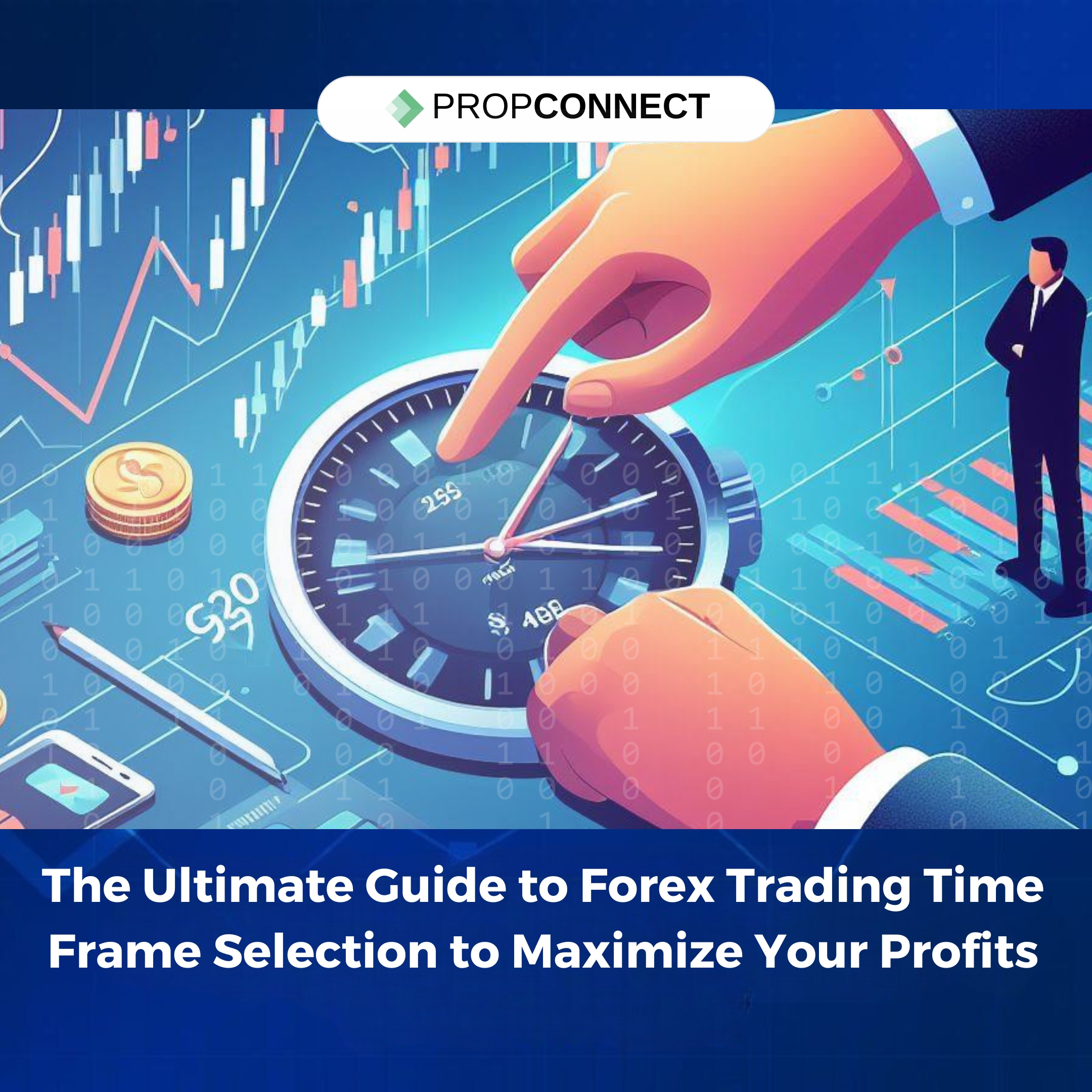Articles
The Ultimate Guide to Forex Trading Time Frame Selection to Maximize Your Profits
Choosing precise timeframes for forex trading is a very dynamic process. Traders should consider their trading style, available time, risk tolerance, and market conditions when deciding between various time frames

Just like in the quick-paced world of forex, picking the proper time frames is as crucial as picking the ideal brush strokes for a painting. For traders to attain significant profits, timing is crucial, and each timeframe presents a unique chance. This article serves as a guide, exploring the specifics of selecting the appropriate forex trading time frames and how this choice impacts a trader's overall performance.
What Does the Time Frame for Forex Trading Mean?
In terms of forex trading, time frames refer to the length of time a trader spends analyzing and placing a trade. These time periods range widely, from the ultra-short to the long term, and each one gives insights into the dynamics of the market. The most typical time intervals consist of:
Scalping (1–5 minutes): Scalping is the practice of trading for as little time as possible in an attempt to profit from even the smallest price movement.
This requires intense focus and prompt decision-making.
Day Trading (5 minutes to 1 day): This also includes day trading on days when you have open positions. it's designed to meet the needs of traders with ample time to monitor the market.
Swing trading (one day to multiple weeks): Trades trends and seizes changes in prices occurring inside a trend. Trading in this manner allows for a more relaxed experience compared to day trading.
Position trading (many weeks to months): This type of long-term trading depends exclusively on fundamentals and is excellent for patient traders who want to catch broad market trends.
How do I select the appropriate time frame?
Examine your trading strategy:
Traders need to select a time frame that corresponds with their trading style and kind. For example, position trading seeks out long-term patterns, whereas scaling is focused on short-term volatility.
Take time investment into account:
Variable time frames require varied amounts of time investment.
While swing and position traders do not need to constantly check their positions, day traders should be actively involved in their trading at all times.
Volatility and risk tolerance:
A higher risk tolerance is necessary for more volatile, shorter time periods.
It should take some time for traders to determine how much risk they can tolerate and to select time periods that work for them.
Market conditions:
The choice of time frame is based on the state of the market.
In unstable markets, use short time frames, and in trending markets, long time frames are suitable.
Maximizing Profits Within the Appropriate Time Frame:
Accurate Analysis: There are more trading chances with shorter time periods, but there is also a greater possibility of misleading signals.
There would be fewer opportunities, even if this would deliver accurate signals over a longer period of time.
Risk Management: Regardless of the time frame selected, risk management must be effective.
When traders modify the size of their positions and set stop-loss levels, they should consider the volatility associated with the selection of a specific timeframe.
Recognizing Market Trends: Diverse time frames provide insight into distinct market patterns.
Combining several time frames gives traders a comprehensive understanding of the market trend, enabling them to recognize the general tendency.
Flexibility: The ability to adjust to shifting market conditions is fundamental.
Traders must constantly adjust their time frames in response to market swings.
Difficulties in Different Time Frames:
Overtrading (Short Time Frames): Day trading and scalping can lead to overtrading since traders seek to enter the market at every slight change in price.
Transaction costs could increase, and overtrading may result in losses.
Delayed Decision-Making (Long Time Frames): Traders might not respond promptly enough, particularly if these decisions take longer to make.
Position traders must, however, walk a tightrope between showing patience and seizing opportunities.
Adapting to Market Shifts: It might be difficult to adapt to shifts in the market environment. So traders need to be alert and modify their strategies when market conditions shift.
In conclusion, choosing precise timeframes for forex trading is a very dynamic process. Traders should consider their trading style, available time, risk tolerance, and market conditions when deciding between various time frames. Nevertheless, based on individual trading goals, it is essential to choose different time frames that correspond with those goals.
To sum up, a trader ought to gain a thorough understanding of the timeframes they have selected, undertake an in-depth evaluation, manage their risks sensibly, and be adaptable. This ability is essential because it allows traders to understand the core of their tactics, maximize profits, and create a masterpiece in the field of currency exchanges.

